Dozens of corporate media outlets published stories claiming anthropogenic climate change caused 2020’s hurricane season to be “wetter,” with more rain falling in shorter periods of time than would have occurred naturally. Data indicates this is false. The stories were all based on a single “attribution,” study in Nature Communications. The study is impossible to verify since it is based on computer models simulations of the past and future, not measurements of past rainfall amounts over the time period specified in the study.
The New York Times, the Associated Press (AP), CNN, the Washington Post, and ABC News, are among dozens of corporate and trade media outlets, that published stories in recent days highlighting the reported results of a single study published in Nature Communications which claims to be able to attribute higher rainfall totals that fell during the active 2020 hurricane season to human caused climate change.
According to the authors of the study, titled “Attribution of 2020 hurricane season extreme rainfall to human-induced climate change,” “human-induced climate change increased the extreme 3-hourly storm rainfall rates and extreme 3-day accumulated rainfall amounts during the full 2020 hurricane season for … hurricane strength storms … by 11 and 8%, respectively.”
The AP’s coverage of the study was typical of the corporate media’s reports in general. In a story, titled “Pouring it on: Climate change made 2020 hurricanes rainier,” writer Seth Borenstein said, “Climate change made the record-smashing deadly 2020 Atlantic hurricane season noticeably wetter, a new study says. And it will likely make this season rainier, too, scientists said.”
All that’s missing from the media’s coverage of the report is context and hard data.
Concerning context, the attributed increase in excess rainfall from hurricanes during the 2020 season reported in the Nature study is based solely on computer model simulations, including simulations hindcasting the amounts of rainfall that would have been expected to occur during past hurricane seasons with and absent human enhanced greenhouse gas emissions. Three hour rainfall rates and accumulated 3 day rainfall totals weren’t measured for past hurricanes, and although comparable data from more recent hurricane seasons was available, it wasn’t used as a basis of comparison either.
Instead of data, the researchers used The Community Earth System Model (CESM) Large Ensemble, consisting of multiple models and numerous model runs (simulations) for hurricanes dating back to 1850. These hindcasts were built on numerous assumptions including limited solar impact on climate, assumptions about past sea surface temperatures, and estimates of carbon dioxide concentrations. They ignored all other natural and human factors that might impact temperatures and global and regional climate changes. Then, using the extreme Representative Concentration Pathway 8.5 (RCP8.5) to simulate carbon dioxides forcing on temperatures, they ran their models to produce estimates of what rainfall totals would have counterfactually been in the past and in 2020, with and absent human greenhouse emissions. They then compared the counterfactual results to the rainfall amounts measured during the 2020 hurricane season, and attributed the difference to human activities.
This is an extreme instance of the computer science and mathematics concept, GIGO: Garbage In, Garbage Out.
That general circulation climate models have serious failings is widely known. There is a significant debate concerning what factors influence global temperatures, as well as, for any particular factor, what direction and to what extent they influence temperatures. Those who have developed climate models admit they don’t understand the role that clouds or large scale ocean circulation patterns play in driving climate change, for example. As a result of this and other currently little understood factors which influence temperatures, rainfall patterns, and the like, as discussed in Climate at a Glance: Climate Sensitivity, mainstream calculations for a doubling of atmospheric carbon dioxide range from eight-tenths of a degree Celsius warming to almost 6 degrees C of warming by 2100.
As discussed in a Climate Realism post, here, two recent peer reviewed studies found a large degree of bias towards warmer projections, and that the CMIP5 models warm 4 to 5 times faster than actual observed temperature data. McKitrick and Christy (2020) write in “Persuasive warming bias in CMIP6 tropospheric layers” that “[W]e see no improvement between the CMIP5 and the CMIP6 models.”
Indeed, in July 2021 the journal Science published an article noting “climate scientists face this alarming reality, the climate models that help them project the future have grown a little too alarmist. Many of the world’s leading models are now projecting warming rates that most scientists, including the model developers themselves, believe are implausibly fast.
The researchers then compounded their error of relying on admittedly flawed computer models as a basis for attributing changes in hurricane rainfall patterns by using the most extreme climate scenario generated by those models, RCP8.5. Research demonstrates the world hasn’t been on the RCP8.5 path, since before it was first generated by climate models. More recently, Climate Realism highlighted two scientific papers demonstrating that RCP8.5 future climate scenarios can’t occur. There simply isn’t enough fossil fuel in existence on the planet to make it happen.
The attribution claims made in Nature Communications are also not supported by available hurricane data. Despite 2020 being an active hurricane season, long-term data show no increase in the number or intensity of hurricanes in the North Atlantic.
As pointed out in Climate Realism, here, data assembled by Ryan Maue, Ph.D., formerly the chief scientist the National Oceanic & Atmospheric Administration (NOAA), shows Accumulated Cyclone Energy from hurricanes in the United States has not increased, as shown in Figure 1 below. Nor, as Figure 2 shows, has the number of major hurricanes striking the United States increased.

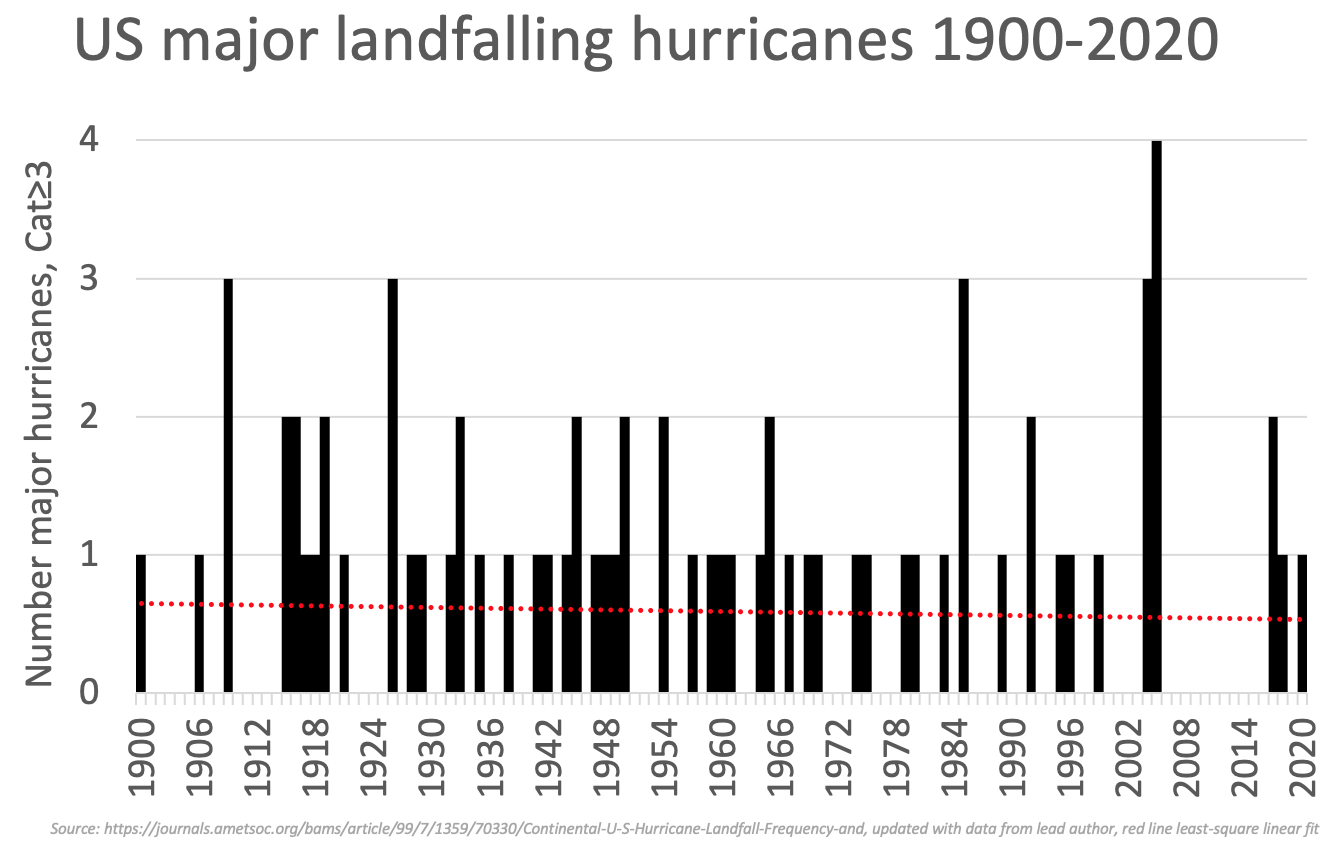
Indeed, as discussed in Climate at a Glance: Hurricanes, NOAA’s records show the United States recently went through its longest period in recorded history without a major, Class 3 or above, hurricane strike, and America also recently experienced its fewest total hurricanes in any eight-year period. Repeated reports by the U.N. Intergovernmental Panel on Climate Change (IPCC) also indicate it has found no evidence human activities are changing hurricane patterns. In its 2018 interim report, the IPCC stated there is “only low confidence for the attribution of any detectable changes in tropical cyclone activity to anthropogenic influences” (Emphasis mine). Similarly, in its AR6 WG1 report, released in August 2021, the IPCC wrote, “[i]dentifying past trends in TC [tropical storm] metrics remains a challenge.” The IPCC went on to say it could not conclude hurricane trends had changed or that it could attribute any effect on hurricanes to human activities. So much for any claim that science shows human caused climate change is supercharging storms in the North Atlantic.
In the end, virtual worlds aren’t real worlds. With the current limited state of knowledge, attribution studies are sideshow carnival crystal ball gazing, tea leave reading stuff, not serious scientific research. Watts Up With That has published multiple papers examining the inherent weaknesses and failings of climate “attribution” studies.
Basing claims of past and future hurricane rainfall amounts on computer models which don’t even accurately replicate past or present temperatures or temperature trends, the most basic projection they make, is foolish. Compounding that error by using a climate scenario that is actually impossible, is even worse. Neither factor should have instilled enough confidence in mainstream media outlets to tout the alarming rainfall claims made in this single Nature Communications study, absent outside verification. Available data provide no support for the claim that climate change is causing hurricanes to become more frequent, more powerful, or that it is causing them to dump more rainfall. Even the IPCC says so.




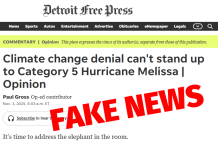






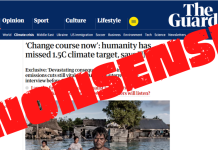
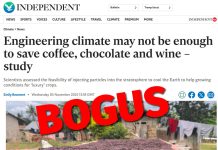
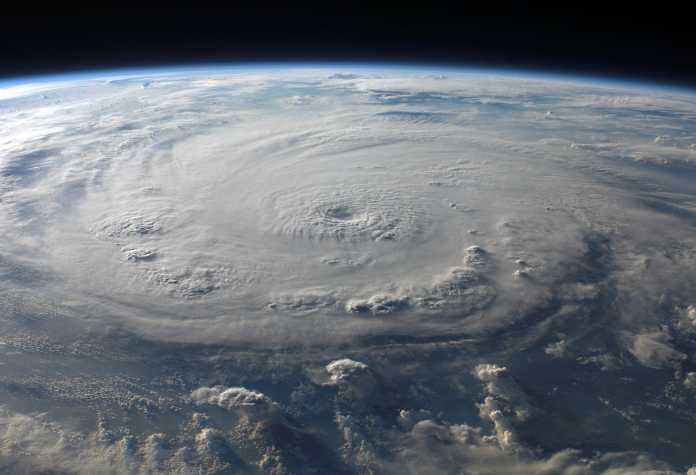









Thank you, Sterling for another excellent piece!